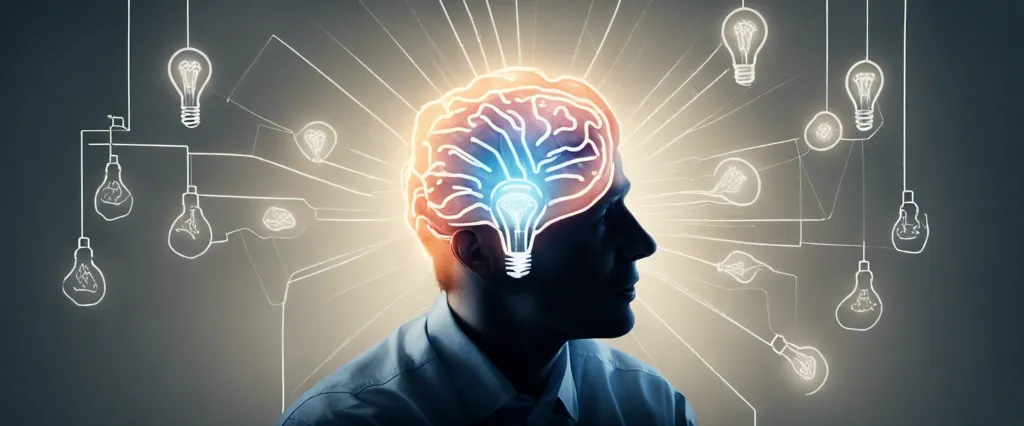How to Create a Mind explores the potential of artificial intelligence and the future of human consciousness. Ray Kurzweil is a renowned inventor and futurist known for his groundbreaking work in the field of AI and technology. In this book, Kurzweil delves into the complexities of the human brain and offers insights into how we can replicate and even surpass its capabilities through the development of advanced AI systems. With his unique perspective and expertise, Kurzweil provides a thought-provoking exploration of the possibilities and implications of creating a truly intelligent mind.
Chapter 1: Introduction to the concept of reverse-engineering the brain.
In Chapter 1 of “How to Create a Mind,” Ray Kurzweil introduces the concept of reverse-engineering the human brain, which involves understanding and replicating the neural connections, patterns, and functions of the brain in order to create artificial intelligence. Kurzweil explains that the brain is composed of billions of interconnected neurons that communicate through electrical and chemical signals. He discusses how advancements in neuroscience, technology, and artificial intelligence have enabled researchers to study and model the brain’s complex processes.
Kurzweil explores the idea that by reverse-engineering the brain, we can gain insights into how intelligence and consciousness emerge, ultimately leading to the creation of machines that can think and learn like humans. He emphasizes the importance of understanding the brain’s hierarchical organization, where patterns at different levels of abstraction interact to generate intelligence. By studying the brain’s structure and functions, Kurzweil believes we can develop AI systems capable of complex cognitive tasks, such as natural language processing, image recognition, and problem-solving.
Overall, Chapter 1 sets the stage for the rest of the book, highlighting the potential for reverse-engineering the brain to revolutionize AI and transform society in the future.
Chapter 2: Exploration of the brain’s hierarchical organization and pattern recognition.
In Chapter 2 of “How to Create a Mind,” Ray Kurzweil delves into the brain’s hierarchical organization and pattern recognition. He explains how the brain processes information in a hierarchical manner, with simple patterns recognized at lower levels and more complex patterns recognized at higher levels. This hierarchical structure allows the brain to efficiently categorize and understand the vast amount of information it receives.
Kurzweil also discusses the concept of pattern recognition in the brain, which is crucial for learning and memory. He explains how the brain is constantly searching for patterns in the environment, allowing it to make predictions and decisions based on past experiences. This ability to recognize patterns is key to the brain’s ability to adapt and learn new information.
Furthermore, Kurzweil explores how artificial intelligence systems can simulate the brain’s hierarchical organization and pattern recognition processes. By developing algorithms that mimic the brain’s ability to recognize patterns, researchers can create AI systems that can learn and adapt in a similar way to the human brain.
Overall, Chapter 2 provides insight into the brain’s complex organization and how understanding these processes can help us develop more advanced AI systems. Kurzweil’s exploration of hierarchical organization and pattern recognition sheds light on the inner workings of the mind and lays the foundation for creating intelligent machines.
Chapter 3: Discussion on the role of neocortex in intelligence and learning.
In Chapter 3 of How to Create a Mind, Ray Kurzweil discusses the role of the neocortex in intelligence and learning. He explains that the neocortex is the outer layer of the brain responsible for higher-order thinking, problem-solving, and abstract reasoning. According to Kurzweil, the neocortex is composed of about 300 million pattern recognizers called neocortical columns, which work together to process information and make connections.
Kurzweil argues that intelligence and learning are a result of the neocortex’s ability to recognize patterns, learn from them, and apply that knowledge to new situations. He suggests that the neocortex operates based on a hierarchical system of pattern recognition, with each level building on the patterns recognized at lower levels.
Kurzweil also discusses the concept of “pattern recognition theory of mind,” which posits that the neocortex is essentially a pattern recognition machine that creates a model of the world based on the patterns it observes. This model allows the brain to predict future events, make decisions, and adapt to new information.
Overall, Kurzweil’s discussion in Chapter 3 highlights the importance of the neocortex in shaping our intelligence and learning abilities, and how understanding the brain’s pattern recognition capabilities can help us to create more intelligent machines.
Chapter 4: Examination of how the brain processes information and forms memories.

In Chapter 4 of “How to Create a Mind” by Ray Kurzweil, the author explores how the brain processes information and forms memories. Kurzweil delves into the intricate workings of the brain, explaining how billions of neurons work together to create thoughts, memories, and consciousness. He discusses the concept of hierarchical thinking, where the brain processes information in layers of abstraction, allowing us to recognize patterns and make sense of the world around us.
Kurzweil also introduces the idea of pattern recognition as a fundamental aspect of how the brain functions. He explains how the brain is constantly analyzing and categorizing information, allowing us to understand language, recognize faces, and navigate our environment. By studying how the brain processes information and forms memories, Kurzweil suggests that we can gain insights into how to create artificial intelligence that mimics the capabilities of the human mind.
Overall, Chapter 4 provides a fascinating look into the inner workings of the brain and how it processes information to create our thoughts and memories. Kurzweil’s exploration of these concepts lays the foundation for understanding how we can develop advanced technologies that replicate the functions of the human brain.
Chapter 5: Insights into the future of artificial intelligence and machine learning.
In Chapter 5 of “How to Create a Mind”, Ray Kurzweil explores the future of artificial intelligence (AI) and machine learning. He discusses the concept of the Technological Singularity, a point in the future where AI surpasses human intelligence and accelerates technological progress exponentially. Kurzweil predicts that by the mid-21st century, AI will be able to simulate the human brain and achieve human-level intelligence.
He also delves into the potential applications of AI in various fields such as healthcare, education, and communication. Kurzweil believes that AI will revolutionize these industries by improving efficiency, accuracy, and accessibility of services.
Furthermore, Kurzweil discusses the ethical implications of AI, including concerns about job displacement, privacy, and the possibility of a superintelligent AI surpassing human control. He emphasizes the need for ethical guidelines and regulations to ensure the responsible development and deployment of AI technologies.
Overall, Chapter 5 provides a thought-provoking glimpse into the future possibilities of AI and machine learning, highlighting both the immense potential benefits and the challenging ethical dilemmas that society may face in the coming decades.
Chapter 6: Analysis of the potential of reverse-engineering the brain for AI development.
In Chapter 6 of “How to Create a Mind” by Ray Kurzweil, the focus is on the potential of reverse-engineering the brain to inform the development of artificial intelligence (AI). Kurzweil argues that by studying and understanding the structure and function of the human brain, we can gain valuable insights into how to create more sophisticated and powerful AI systems.
Kurzweil highlights the complexity and efficiency of the human brain, with its billions of neurons and intricate neural connections, as a model for creating intelligent machines. He explains how advances in neuroscience, particularly in brain imaging and mapping, have allowed researchers to decode and simulate neural networks, leading to breakthroughs in AI technologies such as deep learning algorithms.
Kurzweil also discusses the implications of reverse-engineering the brain for AI development, including the potential for creating artificial neural networks that can replicate human-like intelligence and cognitive abilities. He emphasizes the importance of integrating biological and artificial intelligence to create more advanced AI systems that can surpass human capabilities.
Overall, Chapter 6 delves into the exciting possibilities of using insights from the brain to enhance the development of AI technologies, ultimately leading to more intelligent and adaptive machines.
Chapter 7: Speculations on the implications of achieving human-level intelligence in machines.
In Chapter 7 of “How to Create a Mind” by Ray Kurzweil, the author delves into the potential implications of achieving human-level intelligence in machines. Kurzweil discusses the concept of the technological singularity, a hypothetical future event where artificial intelligence surpasses human intelligence, leading to rapid technological advancement and societal transformation.
He explores the possibilities of AI in various sectors, such as healthcare, education, and transportation, envisioning a future where intelligent machines can enhance human abilities and address complex challenges. Kurzweil also addresses concerns about the risks of AI, including job displacement and ethical dilemmas related to autonomy and decision-making.
Additionally, he emphasizes the importance of developing AI responsibly, with ethical guidelines and safeguards in place to ensure that intelligent machines align with human values and goals. Overall, Kurzweil advocates for a collaborative approach to AI development, where humans and machines work together to create a more intelligent and harmonious society.
In conclusion, Kurzweil’s speculations on the implications of achieving human-level intelligence in machines highlight both the immense potential and challenges associated with AI, urging for a thoughtful and strategic approach to harnessing the power of artificial intelligence for the benefit of humanity.

Chapter 8: Considerations on the ethical and societal impacts of advanced AI technologies.
In Chapter 8 of “How to Create a Mind,” Ray Kurzweil discusses the ethical and societal implications of advanced AI technologies. He explores various considerations regarding the impact of AI on our society, including issues related to privacy, security, and employment. Kurzweil emphasizes the importance of developing ethical guidelines and regulations to ensure that AI is used in a responsible and beneficial manner.
Kurzweil also delves into the potential dangers of AI, such as the possibility of superintelligent machines surpassing human capabilities and the ethical implications of such advancements. He argues that it is crucial for society to anticipate and address these potential risks in order to prevent negative outcomes.
Additionally, Kurzweil discusses the benefits of AI technologies in improving various aspects of society, such as healthcare, education, and transportation. He highlights the potential for AI to enhance our lives and address complex societal challenges.
Overall, Kurzweil’s discussion on the ethical and societal impacts of advanced AI technologies serves as a thought-provoking examination of the implications of this rapidly evolving field and the importance of approaching AI development with mindfulness and foresight.
After Reading
In “How to Create a Mind,” Ray Kurzweil argues that by understanding the principles of how the human brain works, we can create artificial intelligence that mimics human intelligence. Through detailed explanations of the brain’s hierarchical structure and pattern recognition abilities, Kurzweil outlines a framework for developing AI that is capable of learning, problem-solving, and even exhibiting consciousness. Ultimately, Kurzweil envisions a future where AI and human minds seamlessly integrate, revolutionizing the way we live, work, and communicate.
1. “Superintelligence: Paths, Dangers, Strategies” by Nick Bostrom – This book delves into the potential risks and benefits of artificial intelligence and how it may shape the future of humanity.
2. “Life 3.0: Being Human in the Age of Artificial Intelligence” by Max Tegmark – Tegmark explores the implications of AI on society and the potential for creating a positive future with advanced technology.
3. “Machine Learning: A Probabilistic Perspective” by Kevin P. Murphy – This textbook provides a comprehensive overview of machine learning algorithms and their applications in various fields.
4. “The Master Algorithm: How the Quest for the Ultimate Learning Machine Will Remake Our World” by Pedro Domingos – Domingos examines the five major schools of thought in machine learning and how they could lead to a universal algorithm.
5. “Human Compatible: Artificial Intelligence and the Problem of Control” by Stuart Russell – Russell explores the importance of aligning AI goals with human values to ensure a safe and beneficial future for humanity.




